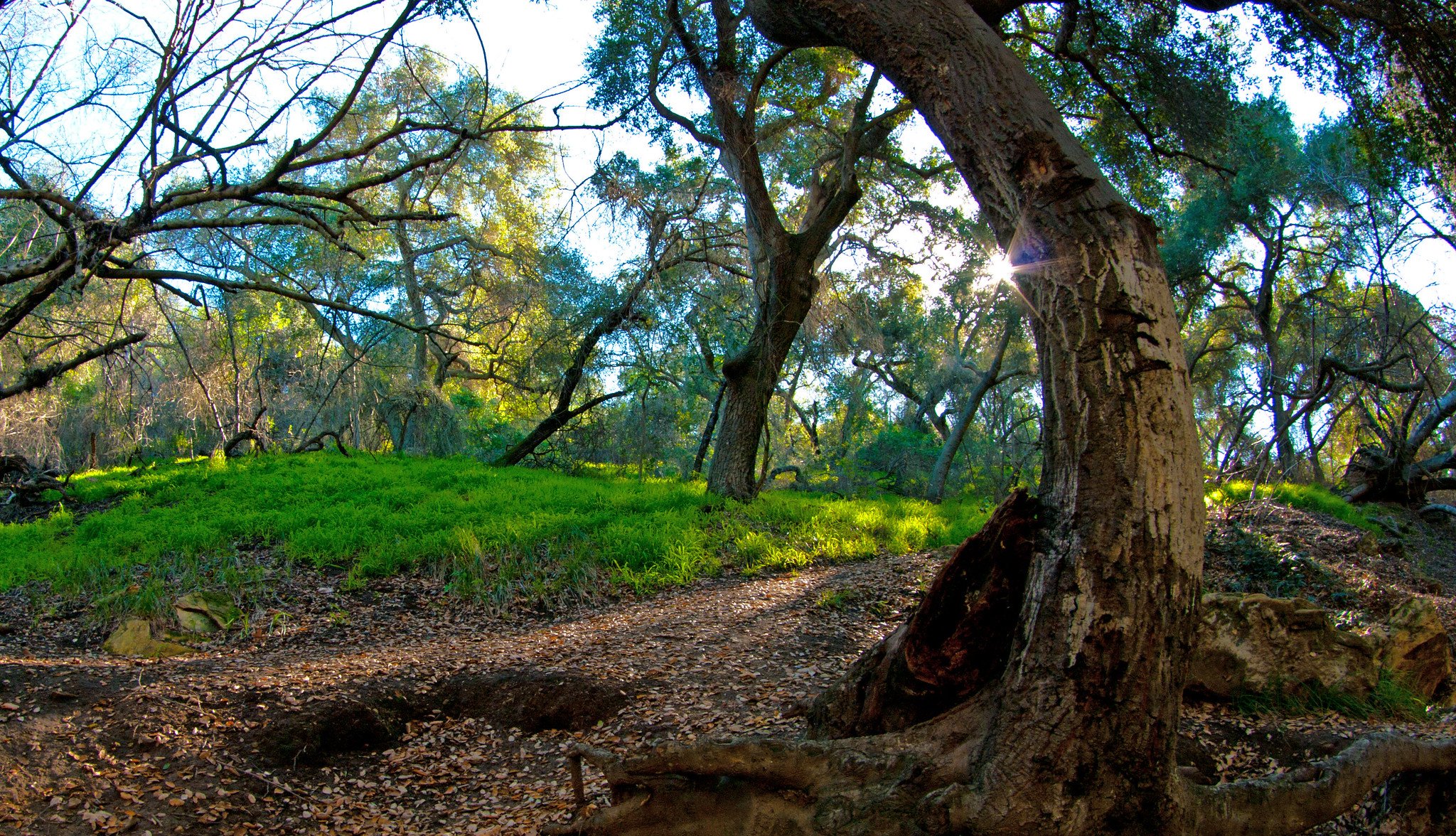A Walk in an Urban Forest
Photo by Ron Reiring (Flickr)
the half-earth city
By Tim Beatley and JD Brown
Published June 2021 in William & Mary Environment Law & Policy Review
Abstract
At the intersection of the biophilic city and the global commitment to halt biodiversity declines lies the half-earth city.
E.O. Wilson inspired the global effort to conserve and restore half the Earth, to sustain remaining biodiversity, necessarily focused on areas where the human footprint is small and the conversion of land to anthropogenic land use is less pronounced. However, given the increasing urbanization of the globe, cities must also play a central role in the conservation of global biodiversity. Holistic ecoregional planning must account for the impact of cities and work to ensure that urban areas are built in harmony with a world where nature receives half.
Cities provide both a known challenge, but also lesser understood opportunities. Uncontrolled urban expansion and expanding ecological footprints are a primary driver of habitat loss and species decline. To the extent that these trends can be slowed or even reversed, cities can work to limit damaging impacts beyond the borders of cities. With their global economic influence, it is critical for cities to assume a leadership role in the stewardship of global biodiversity by participating in city-to-city diplomacy and supporting global commitments. Cities can contribute significantly to the half-earth vision by pursuing a more sustainable path of consumption, while also committing to a resolve to conserve irreplaceable biodiversity at the global scale.
As growing science and the vision of the biophilic city suggests, cities can also provide for flourishing biodiversity within the borders of the city. Through the conservation of remnant habitat and the nurturing of unique human-influenced habitats found only in cities, new spaces and connections through and across the urban landscape can be forged.
A central tenant of the biophilic cities’ vision is the acknowledgment that despite the many challenges presented by increasing urbanization, cities are laboratories for continued experimentation and identification of innovative means to balance an improved quality of life with continued flourishing of human and nonhuman species alike. The benefits derived from the integration of nature across the cities are well documented and manyfold. These include: improved health and wellbeing; increased community resilience in the form of the equitable distribution of critical infrastructure such as tree canopies; multimodal transportation; environmental benefits of enhanced stream health, improved water quality, and reduced flood risk; and the promotion of biodiversity through preserved and enhanced ecosystems and habitats. Thus, biodiversity conservation in the form of abundant and accessible nature is part of a larger biophilic city vision that seeks to reverse the negative trends of urban areas and “create healthy, resilient cities and towns for both people and biodiversity.”
Indeed, cities are already at the forefront of biodiversity conservation and the goal of half-earth. The City of Boulder, Colorado, augments its own conservation within the city by building a seamless connection to surrounding national park and federal wilderness areas, and through these collective efforts more than half of the land within surrounding Boulder County is protected. Perhaps even more impressive is the feat of Singapore, a partner city in the Biophilic Cities Network, which has protected more than half of the city through a combination of large-scale, connected reserves and smaller scale neighborhood parks.
This Article examines the law, policy and practices available to cities to nurture the unique biodiversity possible within urban landscapes and to contribute to the larger global effort to regenerate lost migratory pathways and core conservation areas, thereby contributing to the biophilic city and half-earth visions and halting the decline of global biodiversity.
Access Full Law Review Article
Publication Citation: Timothy Beatley and JD Brown, The Half-Earth City, 45 Wm. & Mary Envtl. L. & Pol'y Rev. 775 (2021)
Highline, NYC
Photo by GPA Photo Archive (Flickr)


